GCB Kunstlexikon
PIPILOTTI RIST
VIDEO / FILM
Pipilotti Rist | Interview | Freeing the Wonderlight | Louisiana Channel |
The trailblazing visual artist Pipilotti Rist – named after Pippi Longstocking – has continuously explored and exploded the conventions of video technologies. Come along as she takes us through her sensuous and immersive images and dreamscapes: “A show by me is like a journey through a body, or a helter-skelter through vessels.” “The given so-called normal life looks very surrealistic to me, and surrealistic displays look normal.” Pipilotti Rist argues that one of the responsibilities of artists is “to have a detached view on social constructions, on political situations and try to bring in other alternatives so that we don’t get stuck and frozen in given rules.” She finds it equally important to perceive the world “with closed eyes or in dreams” as what we process with open eyes is only a tiny, extremely subjective extract: “And from that knowledge, I give the same importance to looking inward and outward.” With her camera work, Rist tries to reverse the traditional hierarchy between the object and the subject – where the body often seems small and unimportant. Instead, she wants to immerse the visitor in the work along with the other visitors, “connecting everything on an emotional level.” In continuation of this, she claims that she is quite satisfied if her work can help people understand other perspectives: “If a visitor can lie down and relax and not fight against gravity, it changes her perception.” Rist confronts the conventional museum experience, where we tend to forget the physicality of our bodies and the images we carry inside: “My big goal is to free these images, to free that ‘wonderlight’, either by treating it like painting behind glass, but also to free it in the room, to put it back to our bodies.” She doesn’t distinguish between our bodies and nature: “We are organic structures, chaotic. We are not a Porsche. We are really a plant with no roots. A plant that can walk.” The body is all we have, she continues, and “all the technical tools I use to do my work are already incorporated in our given structure.” Moreover, Rist considers her work melancholic and feels that she is essentially honouring “disintegration, the dying and the beauty of the imperfect.” Pipilotti Rist (b. 1962 as Elisabeth Charlotte Rist) is a Swiss visual artist, who works with video, film and moving images, often displayed as projections. Among her most prevalent themes are gender, sexuality and the human body. In 1997 her work was featured in the Venice Biennial, where she was awarded a Premio 2000 award for the video ‘Ever Is Over All’. Other awards include the Wolfgang Hahn Prize (1999), the Joan Miró Prize (2009) and the Cutting the Edge Award at the 27th Annual Miami International Film Festival (2010). In 2000 her work ‘Open My Glade’ was commissioned by the New York Public Art Fund and was broadcast on the largest video screen in Times Square, New York. Rist has held solo exhibitions at MoMA in New York, Kunstverein in Hamburg, Museum of Contemporary Art in Chicago, Centre Georges Pompidou in Paris and Museo Nacional Centro de Are Reina Sofia in Madrid among others. Her works are a part of prominent museums worldwide including MoMA in New York, Louisiana Museum of Modern Art in Humlebæk and Tate Modern in London. Pipilotti Rist was interviewed by Christian Lund at her studio in Switzerland in January 2019 as well as at the Louisiana Museum of Modern art in February 2019 in connection with the exhibition ‘Åbn min lysning’ (Open my Glade) | curated by Tine Colstrup | Camera Jakob Solbakken | Edited by Roxanne Bagheshirin Lærkesen | Produced by Christian Lund | Copyright Louisiana Channel | Louisiana Museum of Modern Art | 2019 | Supported by Nordea-fonden | YouTube
PIPILOTTI RIST
VIDEO / FILM
Pipilotti Rist | Interview | Freeing the Wonderlight | Louisiana Channel |
The trailblazing visual artist Pipilotti Rist – named after Pippi Longstocking – has continuously explored and exploded the conventions of video technologies. Come along as she takes us through her sensuous and immersive images and dreamscapes: “A show by me is like a journey through a body, or a helter-skelter through vessels.” “The given so-called normal life looks very surrealistic to me, and surrealistic displays look normal.” Pipilotti Rist argues that one of the responsibilities of artists is “to have a detached view on social constructions, on political situations and try to bring in other alternatives so that we don’t get stuck and frozen in given rules.” She finds it equally important to perceive the world “with closed eyes or in dreams” as what we process with open eyes is only a tiny, extremely subjective extract: “And from that knowledge, I give the same importance to looking inward and outward.” With her camera work, Rist tries to reverse the traditional hierarchy between the object and the subject – where the body often seems small and unimportant. Instead, she wants to immerse the visitor in the work along with the other visitors, “connecting everything on an emotional level.” In continuation of this, she claims that she is quite satisfied if her work can help people understand other perspectives: “If a visitor can lie down and relax and not fight against gravity, it changes her perception.” Rist confronts the conventional museum experience, where we tend to forget the physicality of our bodies and the images we carry inside: “My big goal is to free these images, to free that ‘wonderlight’, either by treating it like painting behind glass, but also to free it in the room, to put it back to our bodies.” She doesn’t distinguish between our bodies and nature: “We are organic structures, chaotic. We are not a Porsche. We are really a plant with no roots. A plant that can walk.” The body is all we have, she continues, and “all the technical tools I use to do my work are already incorporated in our given structure.” Moreover, Rist considers her work melancholic and feels that she is essentially honouring “disintegration, the dying and the beauty of the imperfect.” Pipilotti Rist (b. 1962 as Elisabeth Charlotte Rist) is a Swiss visual artist, who works with video, film and moving images, often displayed as projections. Among her most prevalent themes are gender, sexuality and the human body. In 1997 her work was featured in the Venice Biennial, where she was awarded a Premio 2000 award for the video ‘Ever Is Over All’. Other awards include the Wolfgang Hahn Prize (1999), the Joan Miró Prize (2009) and the Cutting the Edge Award at the 27th Annual Miami International Film Festival (2010). In 2000 her work ‘Open My Glade’ was commissioned by the New York Public Art Fund and was broadcast on the largest video screen in Times Square, New York. Rist has held solo exhibitions at MoMA in New York, Kunstverein in Hamburg, Museum of Contemporary Art in Chicago, Centre Georges Pompidou in Paris and Museo Nacional Centro de Are Reina Sofia in Madrid among others. Her works are a part of prominent museums worldwide including MoMA in New York, Louisiana Museum of Modern Art in Humlebæk and Tate Modern in London. Pipilotti Rist was interviewed by Christian Lund at her studio in Switzerland in January 2019 as well as at the Louisiana Museum of Modern art in February 2019 in connection with the exhibition ‘Åbn min lysning’ (Open my Glade) | curated by Tine Colstrup | Camera Jakob Solbakken | Edited by Roxanne Bagheshirin Lærkesen | Produced by Christian Lund | Copyright Louisiana Channel | Louisiana Museum of Modern Art | 2019 | Supported by Nordea-fonden | YouTube
PIPILOTTI RIST
VIDEO / FILM
Pipilotti Rist | Interview | Freeing the Wonderlight | Louisiana Channel |
The trailblazing visual artist Pipilotti Rist – named after Pippi Longstocking – has continuously explored and exploded the conventions of video technologies. Come along as she takes us through her sensuous and immersive images and dreamscapes: “A show by me is like a journey through a body, or a helter-skelter through vessels.” “The given so-called normal life looks very surrealistic to me, and surrealistic displays look normal.” Pipilotti Rist argues that one of the responsibilities of artists is “to have a detached view on social constructions, on political situations and try to bring in other alternatives so that we don’t get stuck and frozen in given rules.” She finds it equally important to perceive the world “with closed eyes or in dreams” as what we process with open eyes is only a tiny, extremely subjective extract: “And from that knowledge, I give the same importance to looking inward and outward.” With her camera work, Rist tries to reverse the traditional hierarchy between the object and the subject – where the body often seems small and unimportant. Instead, she wants to immerse the visitor in the work along with the other visitors, “connecting everything on an emotional level.” In continuation of this, she claims that she is quite satisfied if her work can help people understand other perspectives: “If a visitor can lie down and relax and not fight against gravity, it changes her perception.” Rist confronts the conventional museum experience, where we tend to forget the physicality of our bodies and the images we carry inside: “My big goal is to free these images, to free that ‘wonderlight’, either by treating it like painting behind glass, but also to free it in the room, to put it back to our bodies.” She doesn’t distinguish between our bodies and nature: “We are organic structures, chaotic. We are not a Porsche. We are really a plant with no roots. A plant that can walk.” The body is all we have, she continues, and “all the technical tools I use to do my work are already incorporated in our given structure.” Moreover, Rist considers her work melancholic and feels that she is essentially honouring “disintegration, the dying and the beauty of the imperfect.” Pipilotti Rist (b. 1962 as Elisabeth Charlotte Rist) is a Swiss visual artist, who works with video, film and moving images, often displayed as projections. Among her most prevalent themes are gender, sexuality and the human body. In 1997 her work was featured in the Venice Biennial, where she was awarded a Premio 2000 award for the video ‘Ever Is Over All’. Other awards include the Wolfgang Hahn Prize (1999), the Joan Miró Prize (2009) and the Cutting the Edge Award at the 27th Annual Miami International Film Festival (2010). In 2000 her work ‘Open My Glade’ was commissioned by the New York Public Art Fund and was broadcast on the largest video screen in Times Square, New York. Rist has held solo exhibitions at MoMA in New York, Kunstverein in Hamburg, Museum of Contemporary Art in Chicago, Centre Georges Pompidou in Paris and Museo Nacional Centro de Are Reina Sofia in Madrid among others. Her works are a part of prominent museums worldwide including MoMA in New York, Louisiana Museum of Modern Art in Humlebæk and Tate Modern in London. Pipilotti Rist was interviewed by Christian Lund at her studio in Switzerland in January 2019 as well as at the Louisiana Museum of Modern art in February 2019 in connection with the exhibition ‘Åbn min lysning’ (Open my Glade) | curated by Tine Colstrup | Camera Jakob Solbakken | Edited by Roxanne Bagheshirin Lærkesen | Produced by Christian Lund | Copyright Louisiana Channel | Louisiana Museum of Modern Art | 2019 | Supported by Nordea-fonden | YouTube



